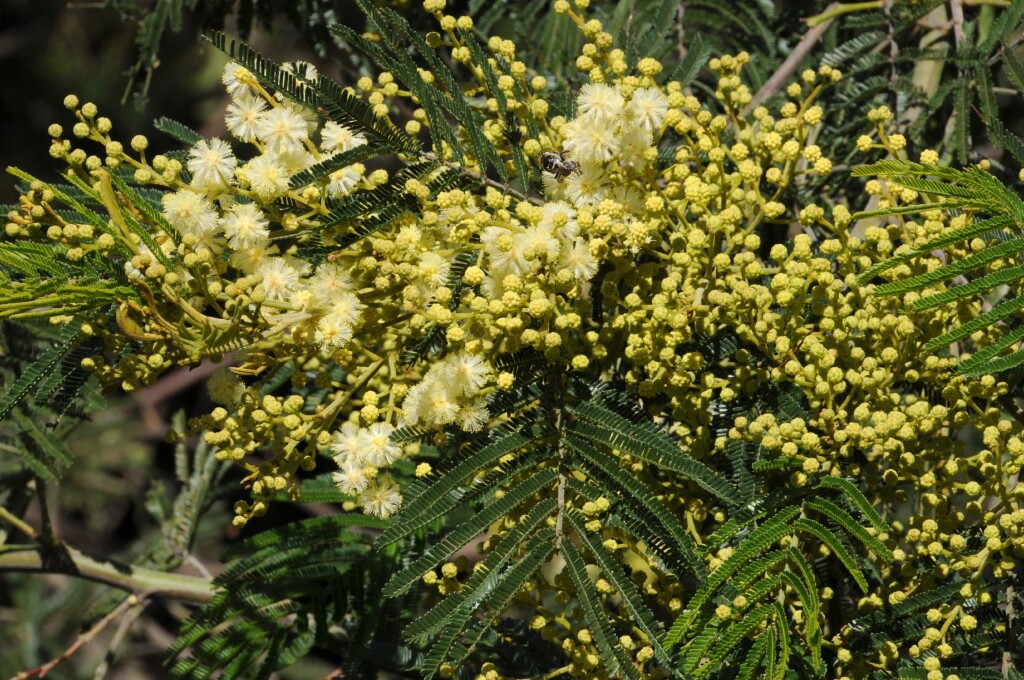Acacia mearnsii
De Wild. Black WattleTree to 15 m high, spreading; bark smooth and greenish-brown on young branches, blackish and rough on trunk; branchlets angular, pubescent. Leaves bipinnate, olive-green; rachis 4–15 cm long, grooved, pubescent, with a raised gland at the junction of each pinna pair and additional glands irregularly spaced between successive pairs; pinnae in 8–25 pairs; pinnules in 30–70 pairs, crowded, linear-oblong, 1–5 mm long, 0.5–0.8 mm wide, within a single pinna more or less equal in length, pubescent (mostly around margins), apex obtuse. Inflorescence a raceme or panicle; heads globular, 20–30-flowered, pale yellow, peduncles to 8 mm long. Pod more or less straight, 5–10 cm long, 5–8 mm wide, strongly constricted between seeds, dark brown to black. Flowers Sep.–Nov.
LoM, Wim, GleP, Brid, VVP, VRiv, MuF, GipP, OtP, WaP, Gold, CVU, GGr, DunT, NIS, EGL, EGU, WPro, HSF, HNF, OtR, Strz, MonT, HFE, VAlp. Also SA, Tas. Widespread and common in lowlands. Grows in open forest, heathy woodland and on cleared land, particularly on dry, shallow soils.
The presence of glands at the junction of, as well as between, the pinna pairs distinguishes A. mearnsii from A. dealbata. Acacia mearnsii is usually later flowering than both A. dealbata and A. decurrens.
Entwisle, T.J.; Maslin, B.R.; Cowan, R.S.; Court, A.B. (1996). Mimosaceae. In: Walsh, N.G.; Entwisle, T.J., Flora of Victoria Vol. 3, Dicotyledons Winteraceae to Myrtaceae, pp. 585–658. Inkata Press, Melbourne.
 Spinning
Spinning




